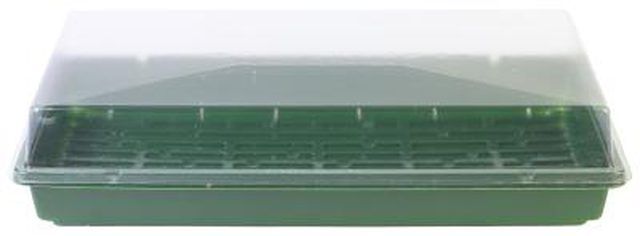Bulbs
Flower Basics
Flower Beds & Specialty Gardens
Flower Garden
Garden Furniture
Garden Gnomes
Garden Seeds
Garden Sheds
Garden Statues
Garden Tools & Supplies
Gardening Basics
Green & Organic
Groundcovers & Vines
Growing Annuals
Growing Basil
Growing Beans
Growing Berries
Growing Blueberries
Growing Cactus
Growing Corn
Growing Cotton
Growing Edibles
Growing Flowers
Growing Garlic
Growing Grapes
Growing Grass
Growing Herbs
Growing Jasmine
Growing Mint
Growing Mushrooms
Orchids
Growing Peanuts
Growing Perennials
Growing Plants
Growing Rosemary
Growing Roses
Growing Strawberries
Growing Sunflowers
Growing Thyme
Growing Tomatoes
Growing Tulips
Growing Vegetables
Herb Basics
Herb Garden
Indoor Growing
Landscaping Basics
Landscaping Patios
Landscaping Plants
Landscaping Shrubs
Landscaping Trees
Landscaping Walks & Pathways
Lawn Basics
Lawn Maintenance
Lawn Mowers
Lawn Ornaments
Lawn Planting
Lawn Tools
Outdoor Growing
Overall Landscape Planning
Pests, Weeds & Problems
Plant Basics
Rock Garden
Rose Garden
Shrubs
Soil
Specialty Gardens
Trees
Vegetable Garden
Yard Maintenance
How to Set Up a Grow Room
How to Set Up a Grow Room. For many gardeners, the winter months simply mean growing vegetables, flowers and herbs indoors rather than out. Setting up your first indoor growing environment--a grow room--can be easy and inexpensive. Providing your plants with their basic requirements--space, light, air and the proper temperature--is all that is...

For many gardeners, the winter months simply mean growing vegetables, flowers and herbs indoors rather than out. Setting up your first indoor growing environment--a grow room--can be easy and inexpensive. Providing your plants with their basic requirements--space, light, air and the proper temperature--is all that is needed for successful year-round gardening. The small initial investment will yield fresh, nutritious crops for your family throughout the winter season.
Things You'll Need
Lights with full-spectrum bulbs
Tables or shelving
Air-circulation system
Choose the location for your grow room. While a dedicated room is ideal, you also can convert part of your attic or basement, or set up a grow room in a pantry or large closet. The essential requirements include a power source for lights, fans and timers, and access to a water supply.
Prepare the room. Ensure that you can control the temperature in your grow room to provide the ideal environment for the type of plant you will be growing. Be sure to eliminate drafts, which could inhibit germination or damage young seedlings. Cover any sources of natural light, so that you can control the light cycle entirely with the use of plant lights. Finally, paint the room white, if possible, as this will allow light to reflect most effectively back to your plants.
Provide physical support for the plants. If your available space will accommodate it, bring in plant tables for your growing containers. A space-saving alternative is to purchase or build plant shelves. Spacing between shelves must be sufficient to allow room for the plants at their mature height.
Provide a light source. All plants require full-spectrum light that mimics the cycle of summer sunlight; 48-inch shop lights work well if you’re on a budget. Lights must be installed to allow for raising and lowering them to accommodate the height of growing plants. A pulley system with cables will allow you to adjust the height of the light as your plants grow taller.
Ensure proper air circulation. Adequate ventilation prevents development of mold and fungi, and strengthens the plants as the circulated air moves through the leaves and stems. First-time indoor gardeners can employ the use of ceiling or room fans on a low setting. Those who want to invest a little more money can explore the use of extraction fans, which remove the rising hot air while circulating freshly filtered air in the room.
Tips & Warnings
Install timers on your plant lights so they provide periods of light and dark on the same schedule each day.